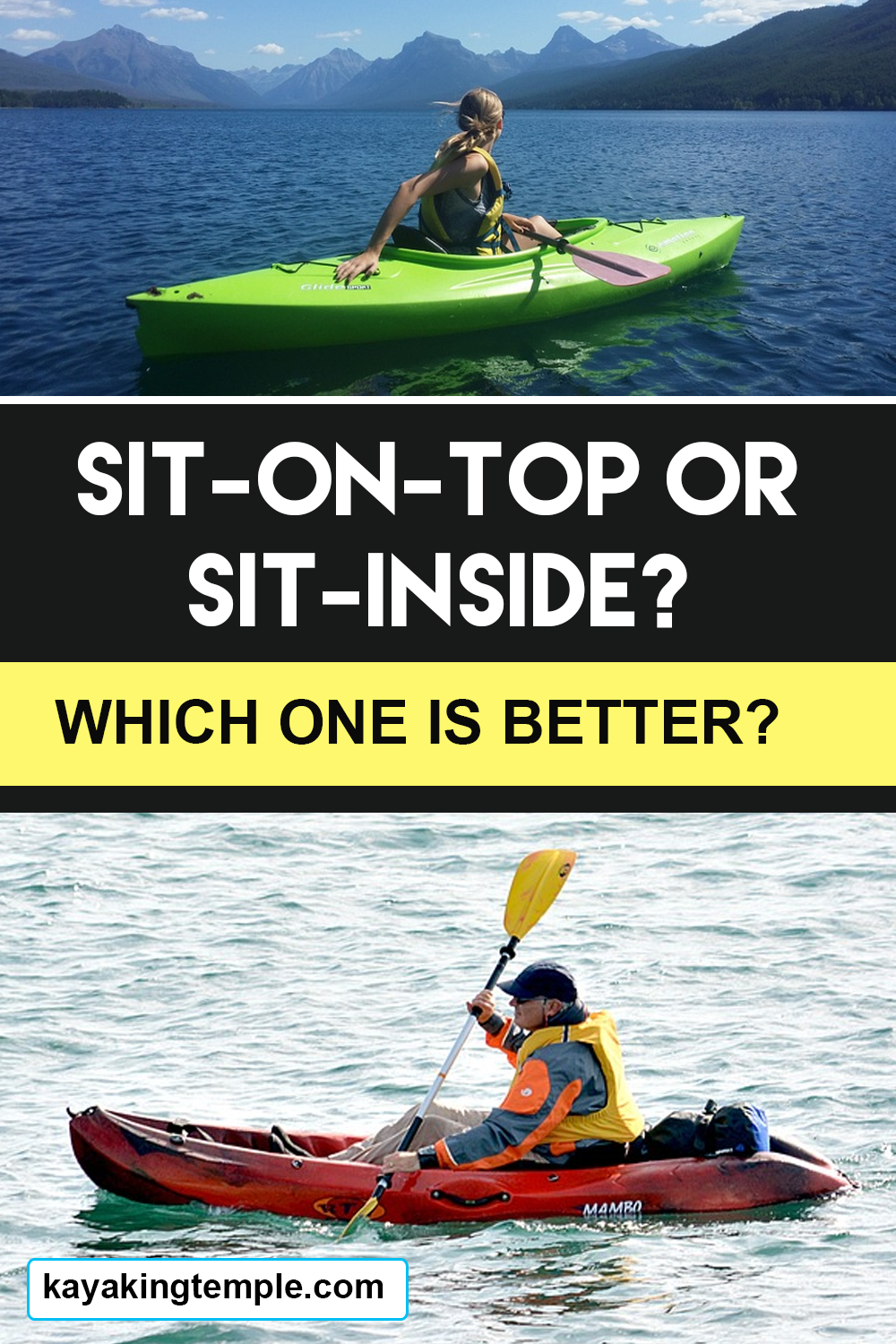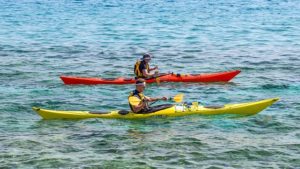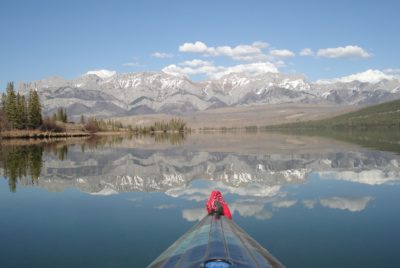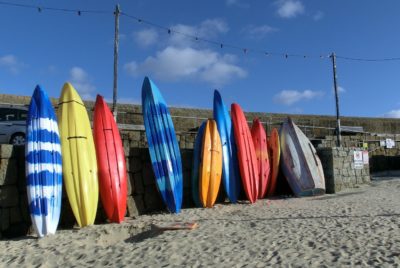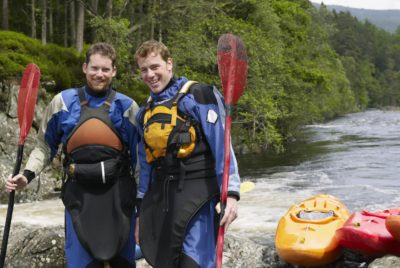Which is Better Sit-inside or Sit-on-top Kayaks?
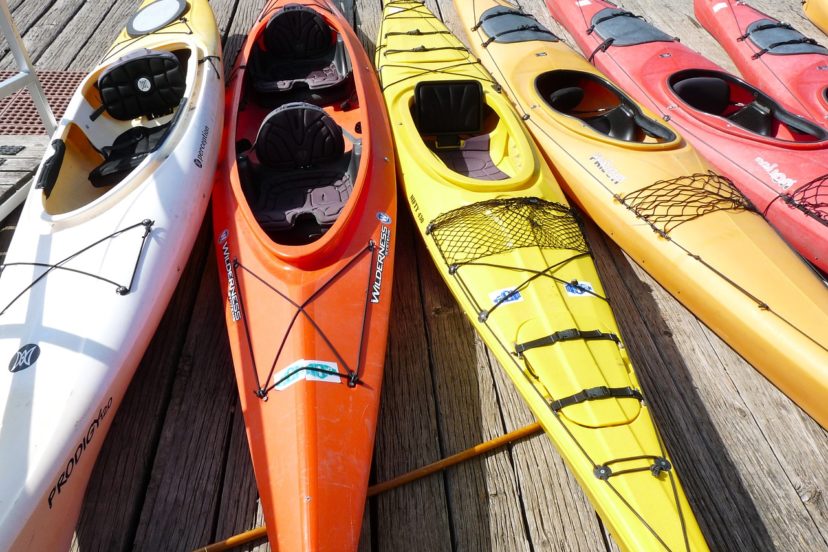
Sit-in and sit-on-top are the two main types of kayaks today. Both of these categories have single and double models. The frame of both kayaks is available as hard shells and inflatables.
Both types share similar components, whether it’s a sit-on-top or sit-inside model. All kayaks have a frontal part known as the bow, top section called a deck, the bottom called the hull, and the back called the stern. You’ll often find deck lines and bungees on the top of the deck.
The stern often has space for grab loops and rudders. The rudders, which are controlled by foot pedals, can be flipped from one side to the other, helping the kayak to track straight while paddling. The skeg extends vertically into the water and helps the boat move in a straight direction while paddling.
Both the sit-in models and the sit-on-tops have integrated seats and feet support sections, such as the “foot wells” found in many sit-on-top models. Excellent models also have some sort of backrest that allows the kayaker to sit more comfortably.
The main difference between these two kinds of kayaks is that one has an enclosed seat while the seat of the other one is mounted on top of the kayak. The sit-ins also have a cockpit where you can attach a spray skirt that prevents water from overflowing onboard. The cockpit contains the seat and adjustable foot pedals.
Sit-on-Top Pros & Cons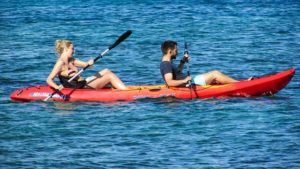
Advantages of a sit-on-top kayak
- The biggest advantage of the sit-on-top is that the cockpit is exposed. Therefore, the kayaker does not feel confined inside the cockpit. If the boat tilts over, the paddler can mount it faster and easier compared to the sit-in models.
- Since the sit-on-top model has a higher center of gravity, it is designed to be wider to enhance stability. It’s not surprising that these models have a higher degree of initial stability. The initial stability is the tendency for the kayak to remain balanced when the paddler is seated on it in calm water.
- The enclosed design of the hull makes the sit-on-top practically unsinkable.
- The self-bailing scupper holes drain water out of the cockpit if the sip-on-top kayak capsizes accidentally. That is why it is an excellent choice for kayaking in the surf zone. There won’t be a need to use a bilge pump.
- The open “tank well” located in the stern that provides ample storage for bulky items such as a cooler or mini-fridge.
Disadvantages of a sit-on-top kayak
- The relatively wide beam is a vital factor that makes the sit-on-tops slower than sit-inside models that have a smaller width. Therefore, the paddler needs to exert more exergy to drive the boat forward. Sit-on-tops are best used for short-range excursions or kayak fishing.
- Sit-on-top kayaks have lower secondary stability because of the wider beam and the higher center of gravity. Secondary stability is the tendency for the kayak to remain upright when tipped to its side while paddling in rough waters.
- The paddler cannot place their knees under the deck due to the open cockpit. This limits the ability of the paddler to control and maneuver the kayak.
- The kayaker must use a longer paddle because of the relatively wider beam of the sit-on-top. In contrast to kayaks with a shorter beam, more force will be required while paddling the boat.
- Since the cockpit is open, the kayaker is exposed to external risks such as the sun, waves that break over the gunwale, and other external forces.
- Since sit-on-tops have a higher height, the paddler is more exposed to the turbulent wind than the kayaker that uses a sit-inside design.
- The kayak always remains a small amount of water in the bilge due to the presence of the self-draining scupper holes beneath the kayak’s cockpit.
Sit-Inside Pros & Cons
Advantages of a sit-inside kayak
- The greatest benefit of using a sit-in kayak is that it has a lower center of gravity, which gives it a greater level of secondary stability. This attribute enables the paddler to lean on the side of the boat to maneuver it more efficiently and also maintain stability while paddling in rough waters.
- The typical lower center of gravity of sit-in kayaks allows for its narrower design that makes it faster than the wider sit-on-top designs. The paddler will also need lesser efforts to propel the paddle while on the water. That is why they are great for expeditions and long-distance paddling.
- The sit-inside kayak has an enclosed cockpit that enables paddlers to rest their knees against the bottom of the deck. This feature increases the convenience of the paddler and enhances the ability to control and maneuver the boat.
- The paddler in a sit-in kayak benefits from more protection from the hot sun and from waves that break over the gunwale. Moreover, if the kayaker chooses to install a spray skirt, there will be complete protection for the entire lower body cavity.
- The kayaker can use a shorter paddle because the sit-in kayaks have narrower beams. With a shorter paddle, the kayaker does not have to exert much energy to move the kayak forward.
- Wind and storms pose lesser risks to the sit-in kayaks because they have a much lower profile compared to sit-on-top kayaks.
- Due to the absence of the self-draining scupper holes in the sit-in kayak, the cockpit remains dry except water splashed inside the cockpit or waves break over the gunwale.
Disadvantages of a sit-inside kayak
- The feeling of confinement within the cockpit is about the most glaring disadvantage of the sit-in kayaks. They are also more difficult to reenter once they capsize.
- If the hatch cover is displaced by heavy waves, the bow and stern holds will get filled with water, causing the kayaks to sink.
- The sit-in kayaks have a lower center of gravity and are significantly narrower than the sit-on-top model. This leads to low initial stability, which means that the kayak will be less stable when the paddler is seated on it in calm water.
- It would be difficult to reenter a sit-in kayak if it capsizes. In such instances, the paddler will have to resort to using a hand-, foot-, or battery-powered bilge pump to remove water from the cockpit.
- The interior of the sit-in kayaks can only carry small items that fit into the hatches because of the smaller hatch covers and the absence of an open tank well in the stern.
Sit-on-top vs. sit-inside, which model should I choose?
The high degree of initial stability makes the sit-on-top the preferred model for newbie kayakers as well as kayak fishermen. On the other hand, intermediate and advanced paddlers who want faster kayaks for their long-range expeditions prefer sit-in kayaks.
Since there are so many varieties of kayaks on the market, one can easily get overwhelmed and confused while trying to select the most suitable model. However, you can streamline your options once you know when and where you will be using it. Simply answer these questions:
- Would you use your kayak on a calm lake or at a beach?
- Is the water body likely to be warm or cold?
- Do you want a stable kayak that would not tip over easily? Or do you prefer one that travels very fast?
Your answer to these questions will help you determine whether to buy a sit-in or sit-on-top kayak.
Like This Article? Pin it on Pinterest
